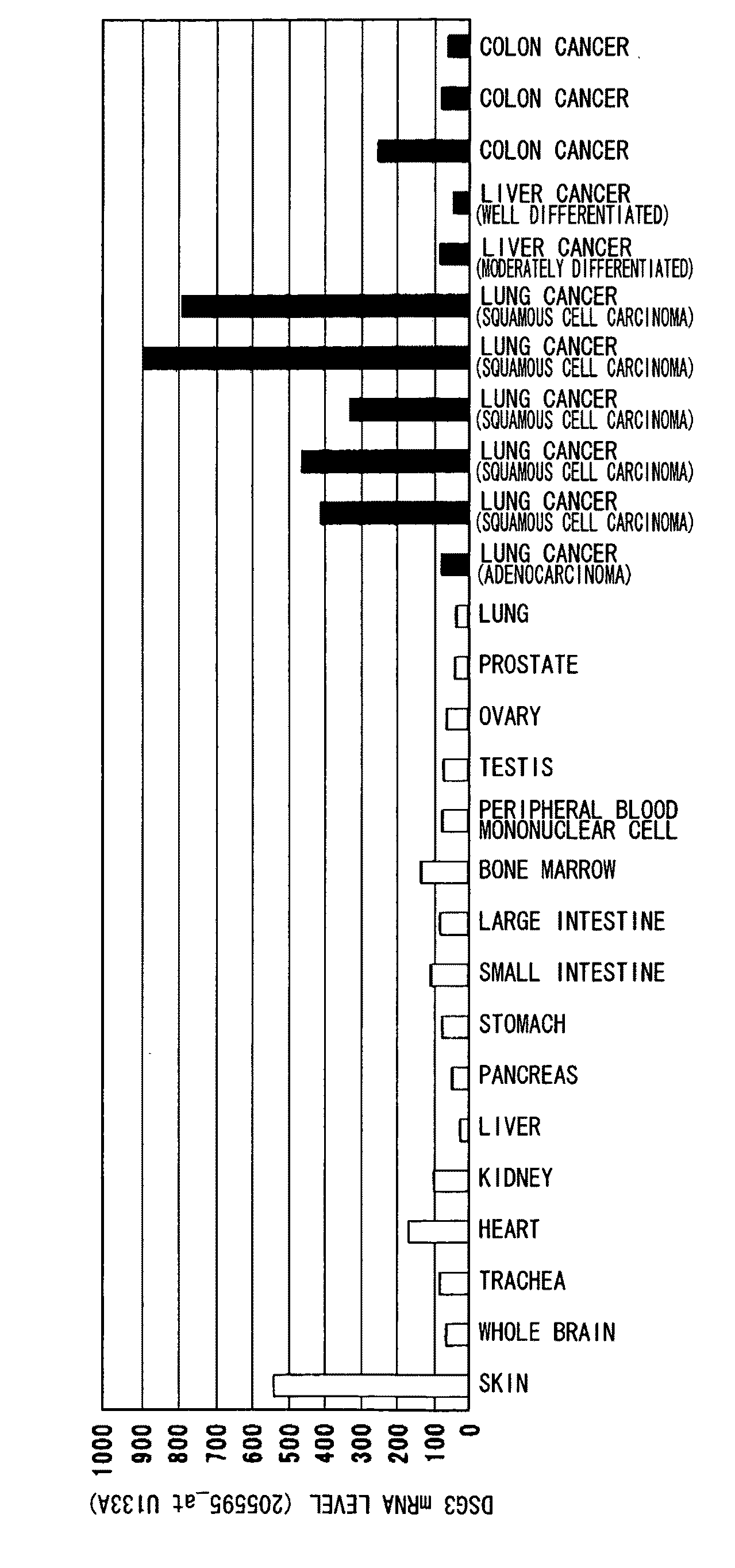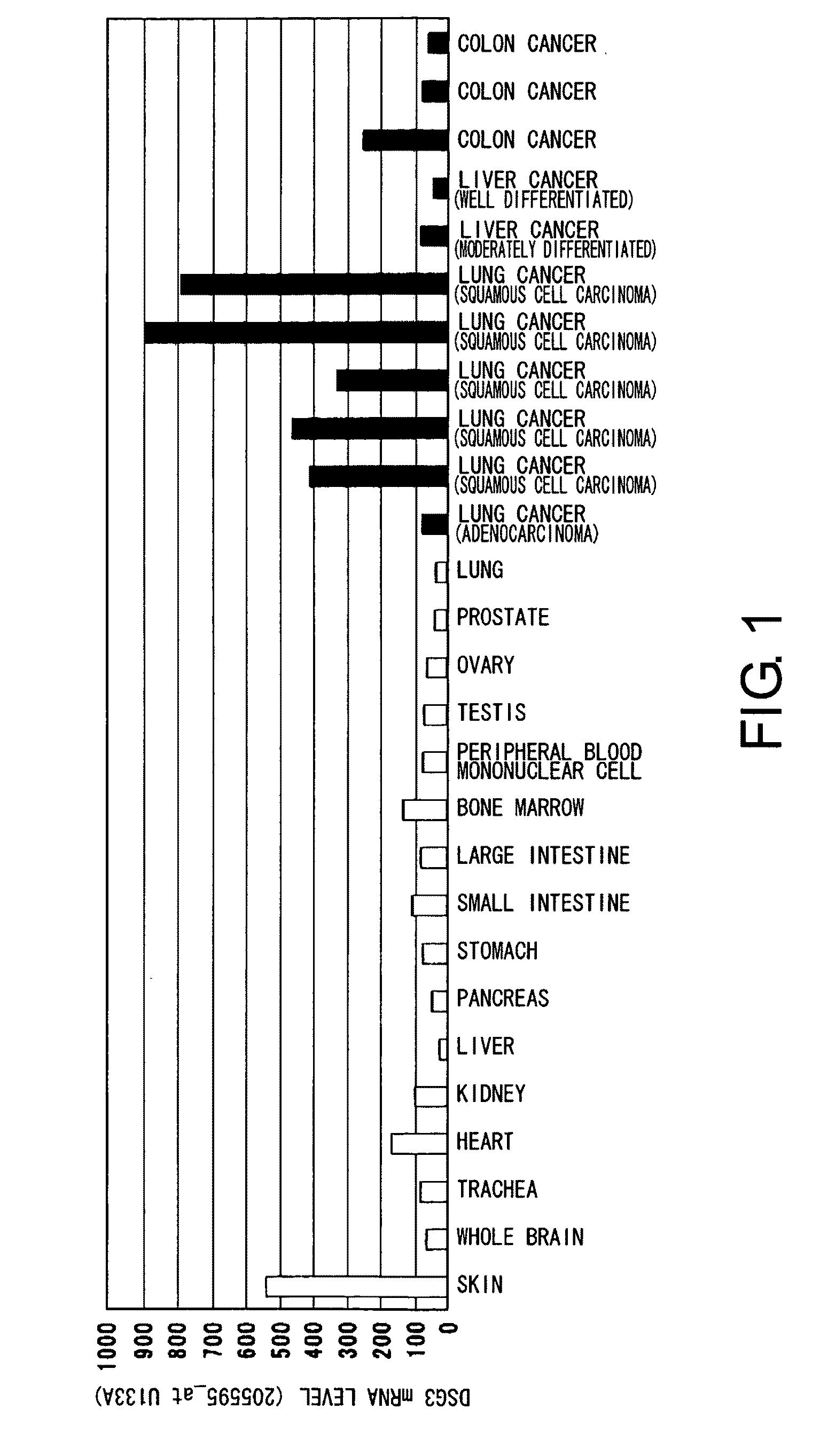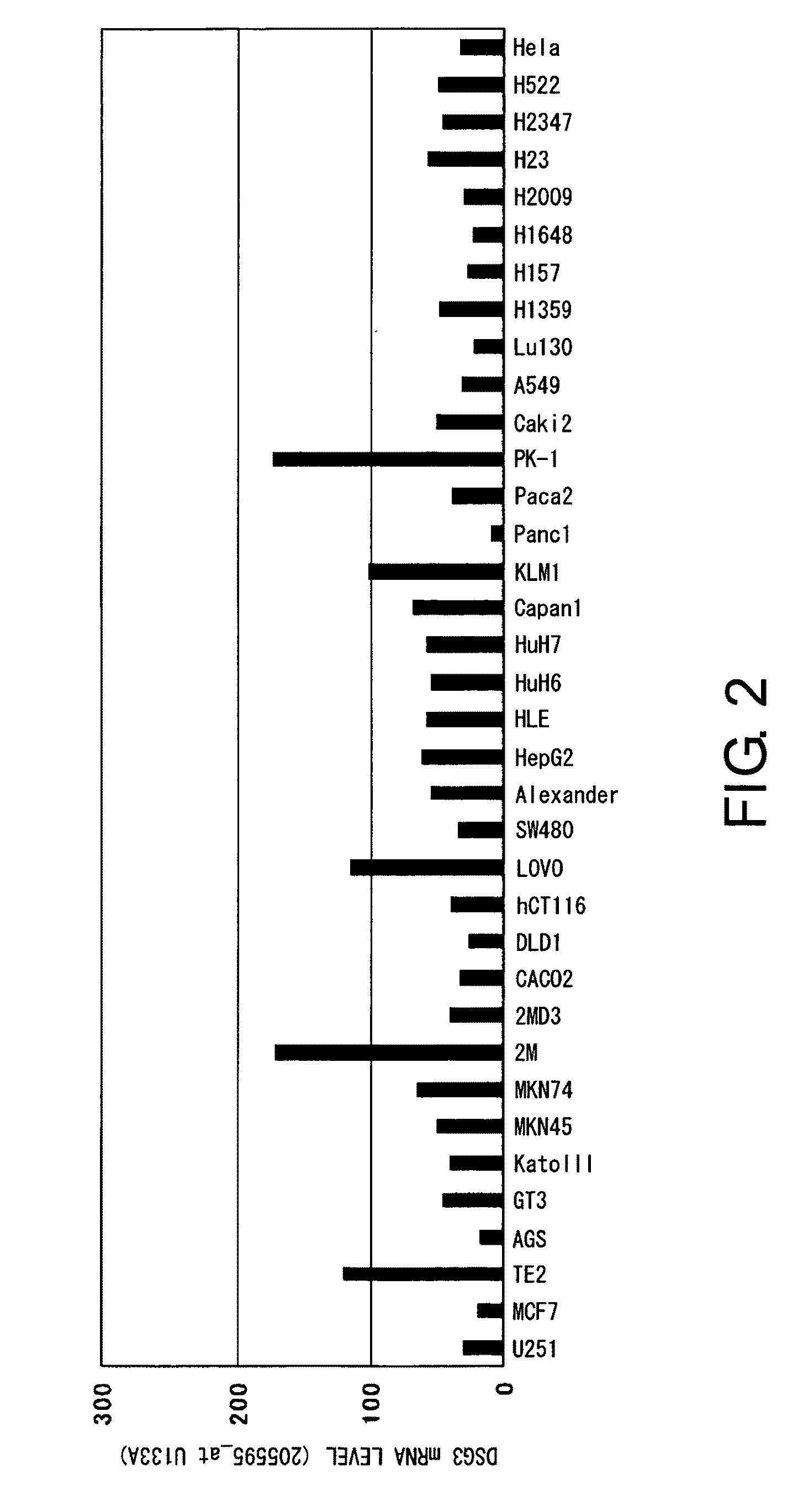Diagnosis and Treatment of Cancer Using Anti-Desmoglein-3 Antibodies
a technology of desmoglein-3 and cancer, which is applied in the field of cancer diagnosis and treatment, cell proliferation inhibitors, and anticancer agents, can solve the problems of insufficient response to chemotherapy and radiation therapy, slow progression, and inability to fully express anti-dsg3 antibodies, etc., and achieves the effect of high expression
- Summary
- Abstract
- Description
- Claims
- Application Information
AI Technical Summary
Benefits of technology
Problems solved by technology
Method used
Image
Examples
example 1
DSG3 mRNA Expression Analysis in Various Types of Cancers
[0400]Gene chip was used to perform DSG3 gene expression analysis. To search for a gene whose expression is enhanced in cancer cells, various RNAs and total RNAs prepared from various extracted tissues by conventional methods using ISOGEN (manufactured by Nippon Gene) shown in Tables 1 and 2 were used. More specifically, gene expression analysis was carried out using 10 μg each of total RNAs, and subjecting them to GeneChip U-133A (manufactured by Affymetrix) according to the Expression Analysis Technical Manual (manufactured by Affymetrix). When analyzing lung adenocarcinoma and hepatocellular carcinoma, a total of 10 μg was obtained by combining total RNAs of twelve lung adenocarcinoma cases and three hepatocellular carcinoma cases to perform the analysis (Table 1).
TABLE 1TissueSourceWhole brainClontech 64020-1LungClinical sample, 1 caseTracheaClontech 64091-1HeartAmbion 7966KidneyAmbion 7976LiverClinical sample (Surgery)Pan...
example 2
Immunohistological Staining of DSG3 in Lung Squamous Cell Carcinoma
[0404]Since transcription of the DSG3 gene is enhanced in cancer cells, in particular, lung squamous cell carcinoma cells, immunohistological staining analysis was performed to confirm expression of the DSG3 protein.
[0405]Each sample was prepared as a fixed paraffin embedded preparation, and a section sliced to a thickness of 4 μm was mounted on a slide glass and then left at 37° C. for about 16 hours to dry sufficiently. The section was deparaffinized by soaking three times in 100% xylene for five minutes each, and then hydrophilized by soaking three times in 100% ethanol for five minutes each and further soaking in 70% ethanol for five minutes. Then, after washing three times in a 50 mM TBS buffer solution for five minutes, the antigen in the section was activated by treating the section with a citrate buffer (10 mM, pH 7.0) at 120° C. for ten minutes. The section in which the antigen had been activated was washed ...
example 3
Preparation of Anti-DSG3 Antibody
[0407]3-1) Cloning of a Full-Length cDNA Encoding Human DSG3
[0408]A full-length cDNA encoding human DSG3 was obtained by PCR amplification using Human Small Intestine Marathon-Ready cDNA (CLONTECH) as a template. Specifically, 50 μL of a reaction solution containing 2 μL of cDNA, 1 μL of sense primer (SEQ ID NO: 37), 1 μL of antisense primer (SEQ ID NO: 38), 5 μL of 10×KOD-Plus buffer, 5 μL of 2 mM dNTPs, 2 μL of 25 mM MgSO4, and 1 μL of KOD-Plus was subjected to a PCR reaction performed by five cycles of a reaction cycle consisting of reactions at 94° C. for 15 seconds and 70° C. for two minutes, five cycles of a reaction cycle consisting of reactions at 94° C. for 15 seconds and 68° C. for two minutes, and 28 cycles of a reaction cycle consisting of reactions at 94° C. for 15 seconds and 66° C. for two minutes. The amplified product obtained by the above-mentioned PCR reaction was inserted into pGEM-T easy using a pGEM-T Easy Vector System I (Prome...
PUM
| Property | Measurement | Unit |
|---|---|---|
| Force | aaaaa | aaaaa |
| Electric charge | aaaaa | aaaaa |
| Capacitance | aaaaa | aaaaa |
Abstract
Description
Claims
Application Information
 Login to View More
Login to View More - R&D
- Intellectual Property
- Life Sciences
- Materials
- Tech Scout
- Unparalleled Data Quality
- Higher Quality Content
- 60% Fewer Hallucinations
Browse by: Latest US Patents, China's latest patents, Technical Efficacy Thesaurus, Application Domain, Technology Topic, Popular Technical Reports.
© 2025 PatSnap. All rights reserved.Legal|Privacy policy|Modern Slavery Act Transparency Statement|Sitemap|About US| Contact US: help@patsnap.com



